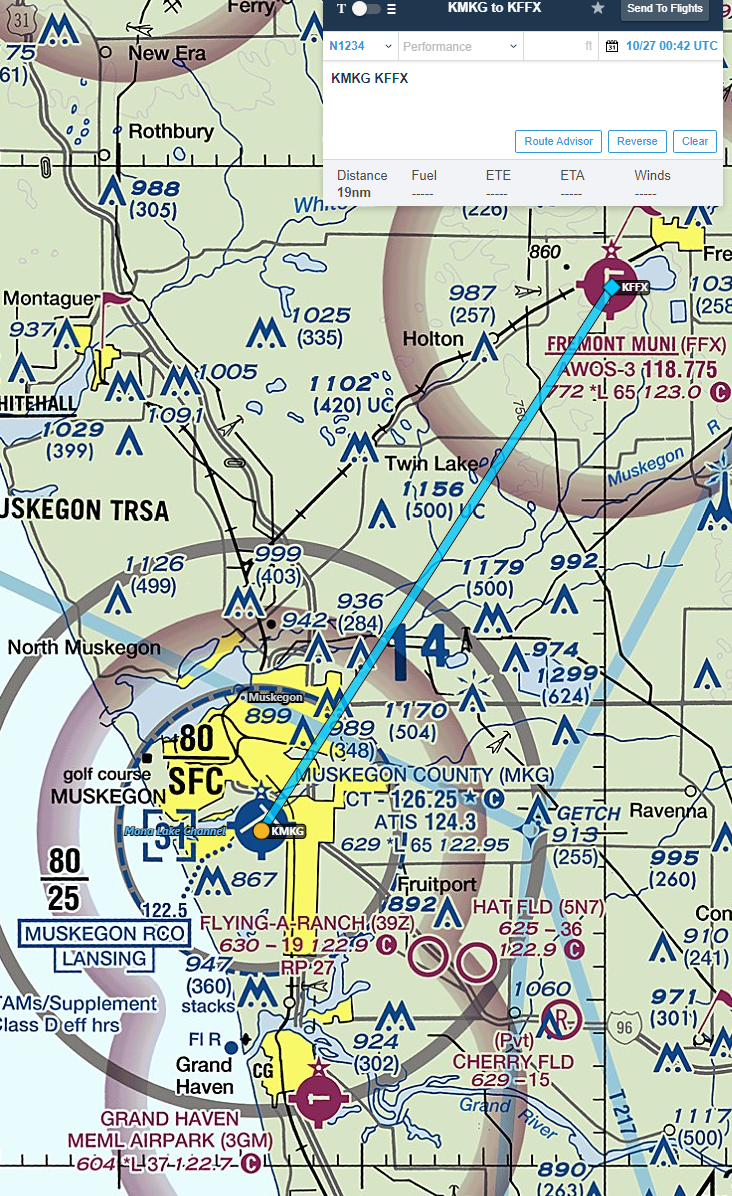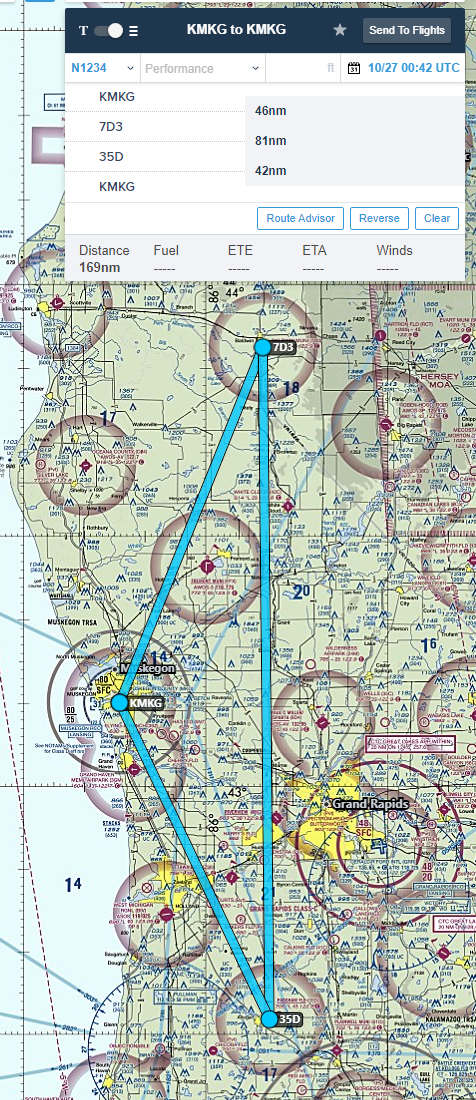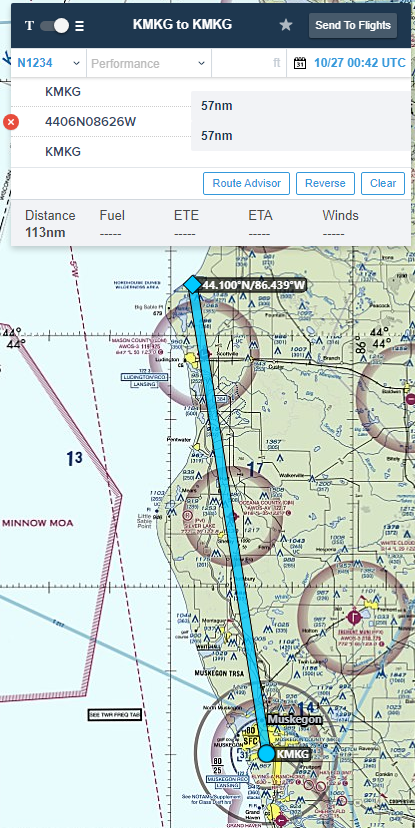What counts as “cross-country” flight for pilots, especially those in training, can be confusing. Just to make it more so, there are multiple differing definitions of “cross-country” flight time that a pilot might be able to log depending on the type of flight a pilot is conducting or for what the experience will be used.
If we refer to 14 CFR § 1.1 – General definitions, we find no definitions related to cross-country. We have to then proceed to 14 CFR § 61.1(b) (i) where the FAA notes that anyone (who holds a pilot certificate and does so in an aircraft) who flies from one point after takeoff to somewhere else where they land can actually log cross country flight time as long as that flight “involves the use of dead reckoning, pilotage, electronic navigation aids, radio aids, or other navigation systems to navigate to the landing point.”
So, for your logbook, you could log any flight you do as cross-country.
This flight below would be a good example of that definition applied.

It is only 19 miles, but technically by definition, it might be logged as cross-country. But that is going to make it confusing when you go to take practical tests.
Digging deeper into 14 CFRR 6.1 (b) (ii) we see that they add some notes. A key point here is the indication that:
For the purpose of meeting the aeronautical experience requirements (except for a rotorcraft category rating), for a private pilot certificate (except for a powered parachute category rating), a commercial pilot certificate, or an instrument rating, or for the purpose of exercising recreational pilot privileges (except in a rotorcraft) under § 61.101 (c), time acquired during a flight;
that it “includes a point of landing that was at least a straight-line distance of more than 50 nautical miles from the original point of departure“
Note: There is an allowance for the point of landing to be 25 nautical miles away from the original point of departure when applied for sport pilot certificates.
This is where we get some of the more confusing points and application examples.
This isn’t saying that the pilot needs to have been physically in the air for more than 50 miles without stopping from their point of origin, but that at least one of the points of departure need be more than 50 miles from where the flight began for it to count as a cross-country flight that would be used toward certification requirements.
For example, this flight counts as a cross-country even though there were stops along the way. The starting and ending point were more than 50 miles apart.

But, we can take a look at another example. Even though this next example includes further total distance flown, if the pilot started at the KMKG airport, they didn’t travel to any landing locations that were more than 50 miles from where they started.

This is what we commonly refer to as the “bad XC triangle” that happens in training. While the total distance flown is 169 miles, neither of the points is far enough away. To make this even more confusing, had the pilot made the same flight starting either at 35D or at 7D3 in this case, the exact same flight WOULD count as a cross-country flight that could be used toward certification requirements. As it is listed here, this flight could not be used as a cross-country flight time experience gaining event toward a certificate or rating.
Then we make this even more confusing, and we find another stipulation in requirements for ATP certificates that allows:
For the purpose of meeting the aeronautical experience requirements for an airline transport pilot certificate (except with a rotorcraft category rating), time acquired during a flight—
and; That is at least a straight-line distance of more than 50 nautical miles from the original point of departure.
Putting this into an example, if I decided to take off from Muskegon, MI and fly up to my favorite sand dunes along Lake Michigan for a little scenic flight, but didn’t land, I could count this toward my ATP certificate cross-country flight experience requirements.
This might look like the example here.

Ok, confused yet? I know I was when I started flying.
Early in my flying I personally decided to get really conservative with my own logging.
If I only log cross-country flights as when I have launched from one airport and physically landed at another airport more than 50 miles away, I know that cross-country time will work for any certification requirements I might encounter. It allows me to make sure what is in my logbook as “cross-country” doesn’t have to come into question when I am trying to apply it to any particular requirements. Doing this conservative logging behavior makes your cross-country time count no matter where it will be needed.
Now, I am not saying you can’t or even shouldn’t log other “versions” of cross-country time. But if you do, get really detailed and make notations so you can identify it clearly at any certification events.
